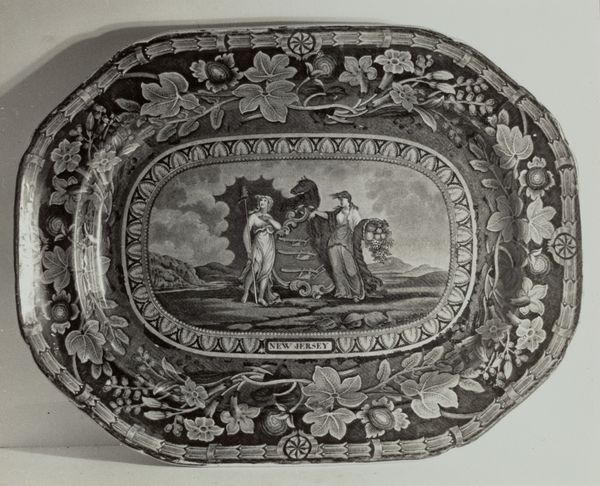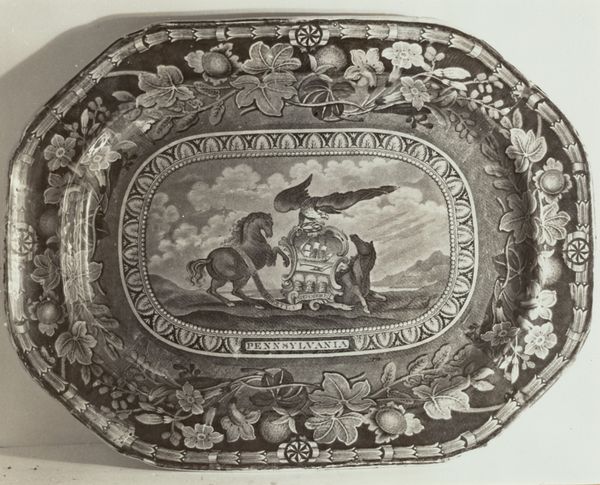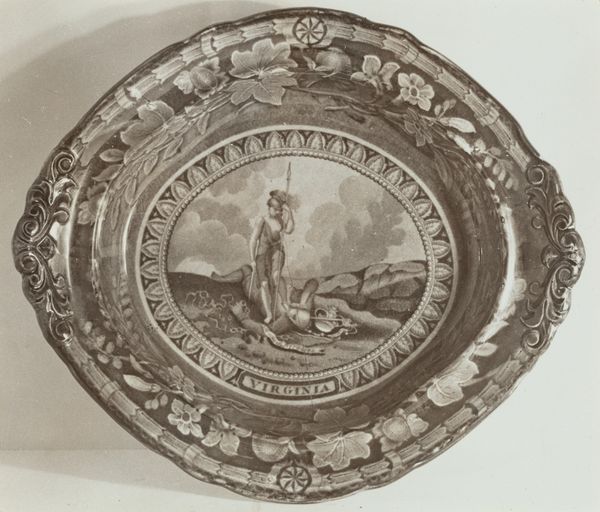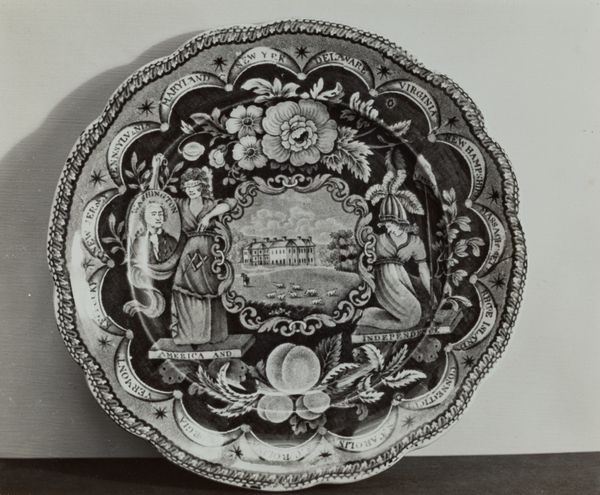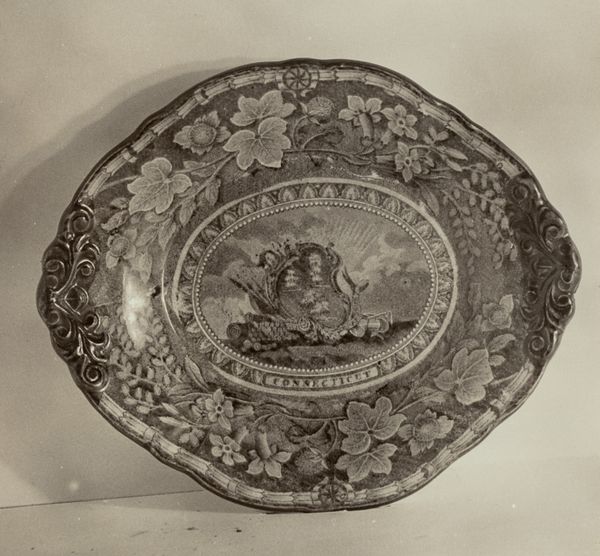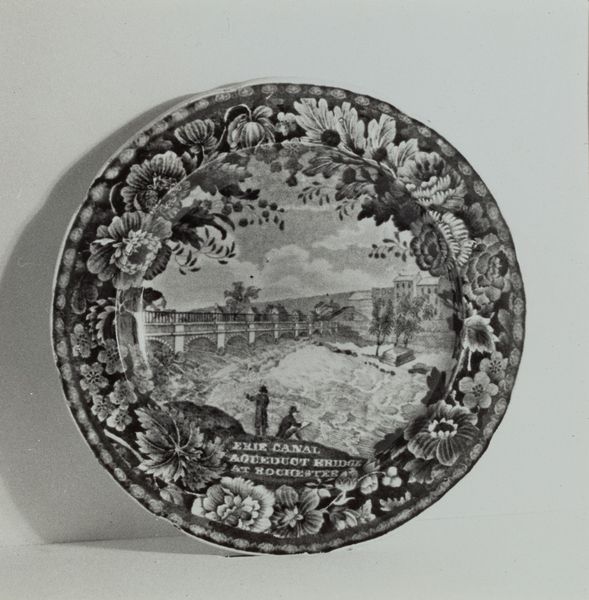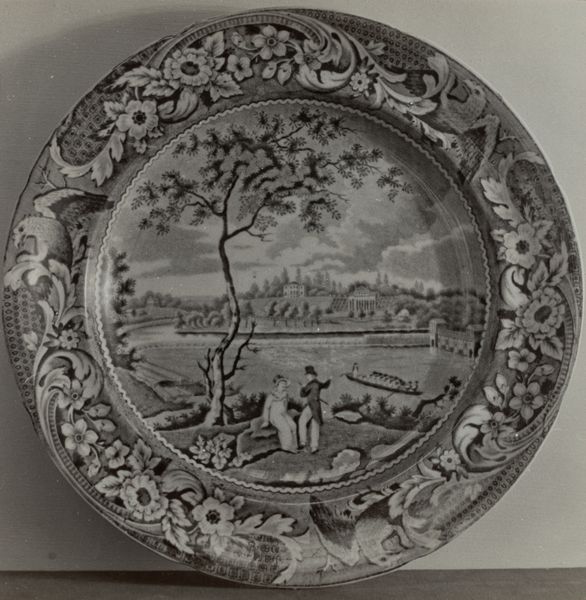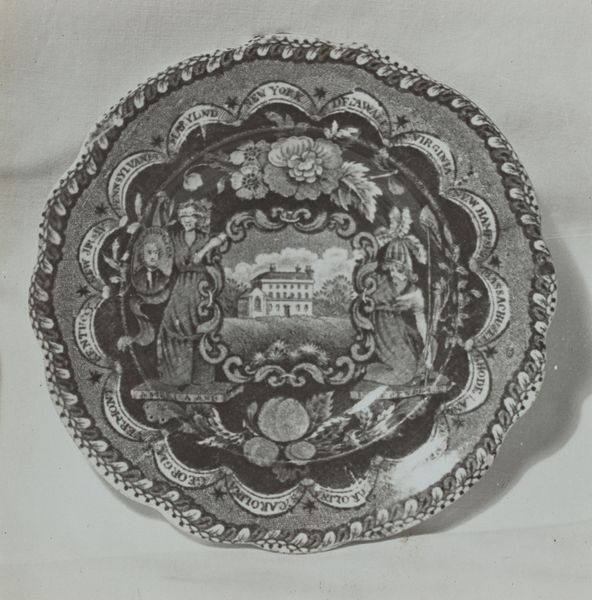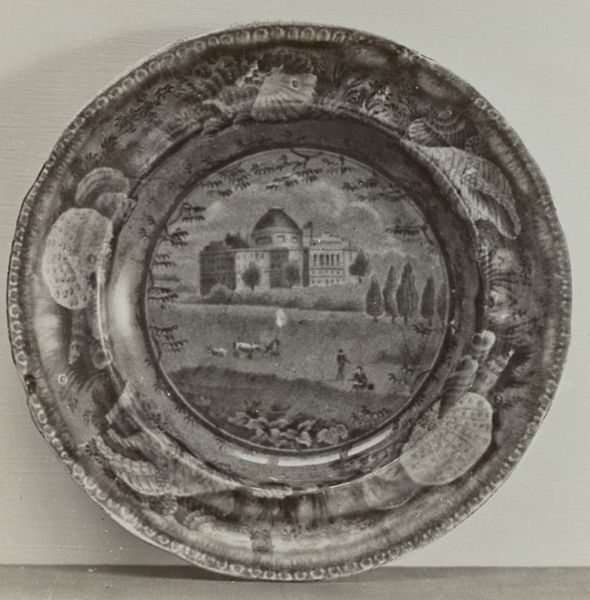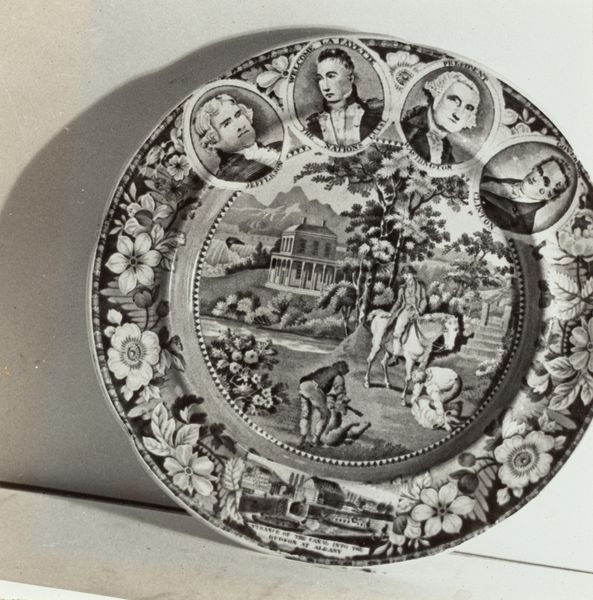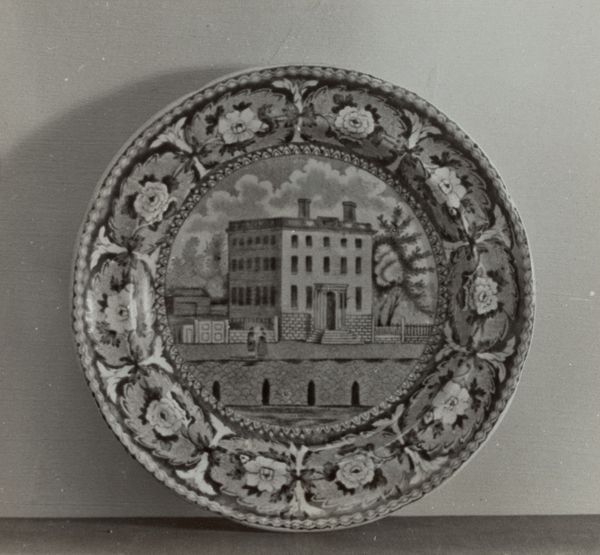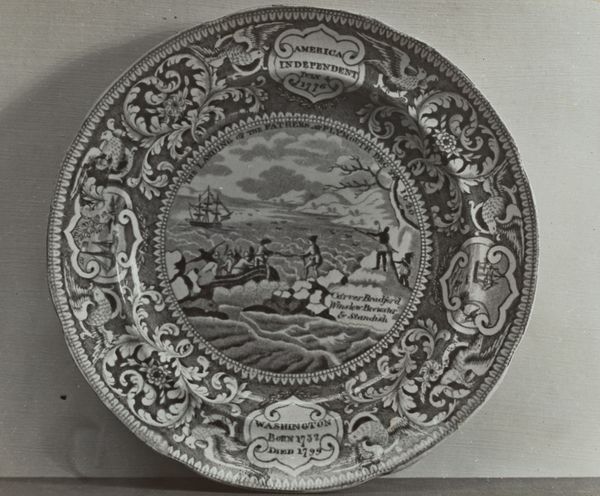
drawing, print, ceramic
#
drawing
# print
#
old engraving style
#
ceramic
#
decorative-art
Dimensions: overall: 20.3 x 25.4 cm (8 x 10 in.) Original IAD Object: 17" long; 13" wide
Copyright: National Gallery of Art: CC0 1.0
Curator: Here we have a platter entitled "Delaware Arms", dating back to approximately 1936. It's rendered on ceramic, likely as a commemorative or decorative piece. Editor: It strikes me as oddly formal, yet also a bit rustic. The central image looks like a historical engraving, while the floral border feels much more ornamental. What do you make of that contrast? Curator: The stark juxtaposition between the central armorial scene and the surrounding decoration is precisely where its visual tension lies. Note how the almost monochromatic palette of the central image amplifies this division of style. Editor: You’re right. The almost greyscale quality really spotlights the imagery. But the imagery itself is what grabs me. We see figures who seem to represent different facets of Delaware's identity. There's commerce implied by the ship, perhaps governance in the standing figure, and labor symbolized by the other figure...and that small animal beneath! Is that supposed to be the state animal? Curator: It is undoubtedly an emblem, strategically placed beneath the figures to visually reinforce Delaware's identity and claims. In the visual grammar of armorial bearings, spatial arrangement always matters. Consider too, the subtle way the ship in the background is linked compositionally to that foreground activity. Editor: So it becomes almost a shorthand visual representation of state values. It feels intentionally created for a very specific type of display and consumption...to present Delaware in a curated, idealized light. Curator: Precisely. And observe how the edge, with all of its flowers, effectively "frames" and sets apart those specific messages we've explored, thus completing a formal rhetorical argument. Editor: Ultimately it’s a functional object carrying a loaded representation. Interesting how those combine, even today. Curator: Yes, by investigating visual pieces such as this, we can truly come to realize that historical narratives are far from stable things, and continue shifting through how we display them.
Comments
No comments
Be the first to comment and join the conversation on the ultimate creative platform.
